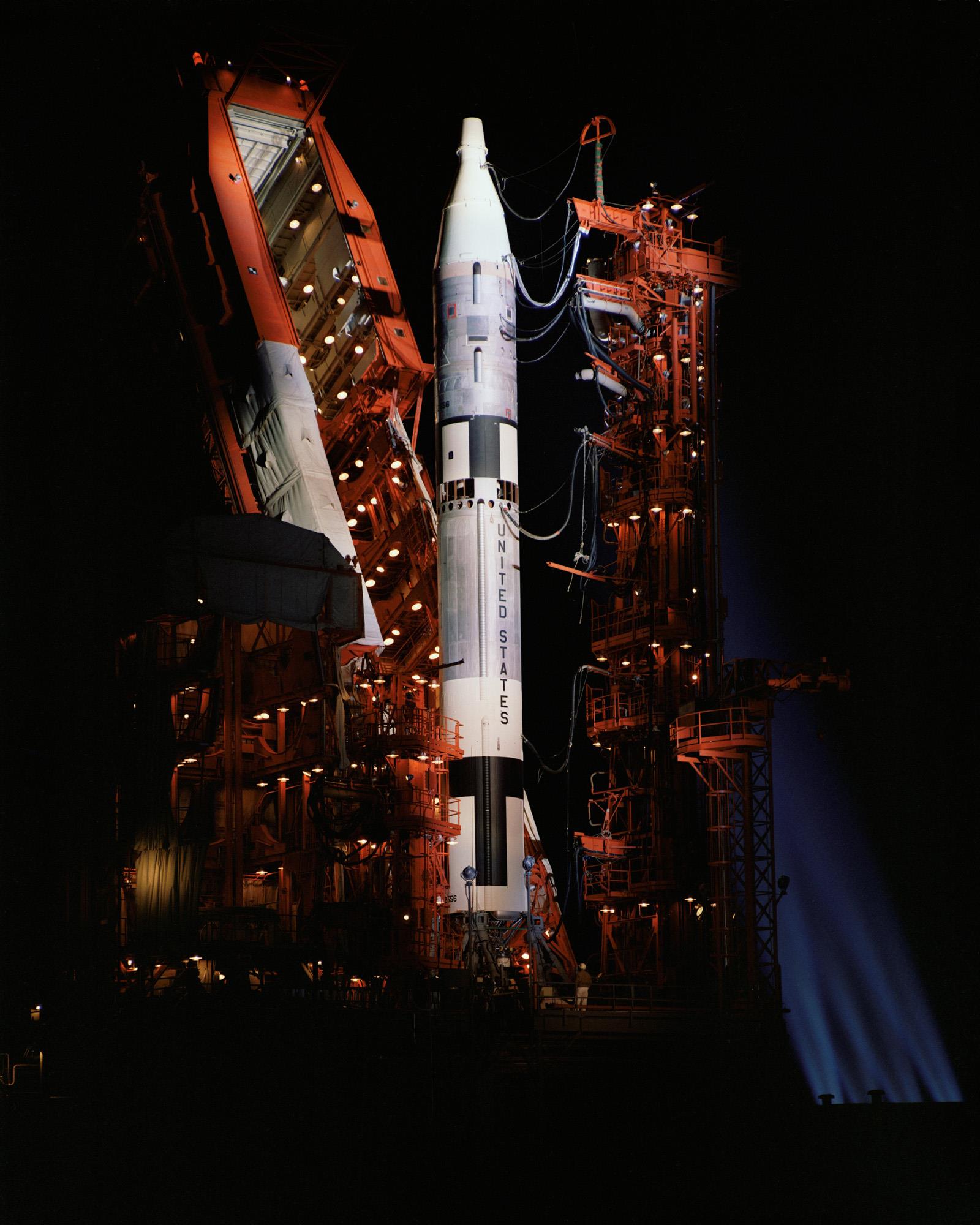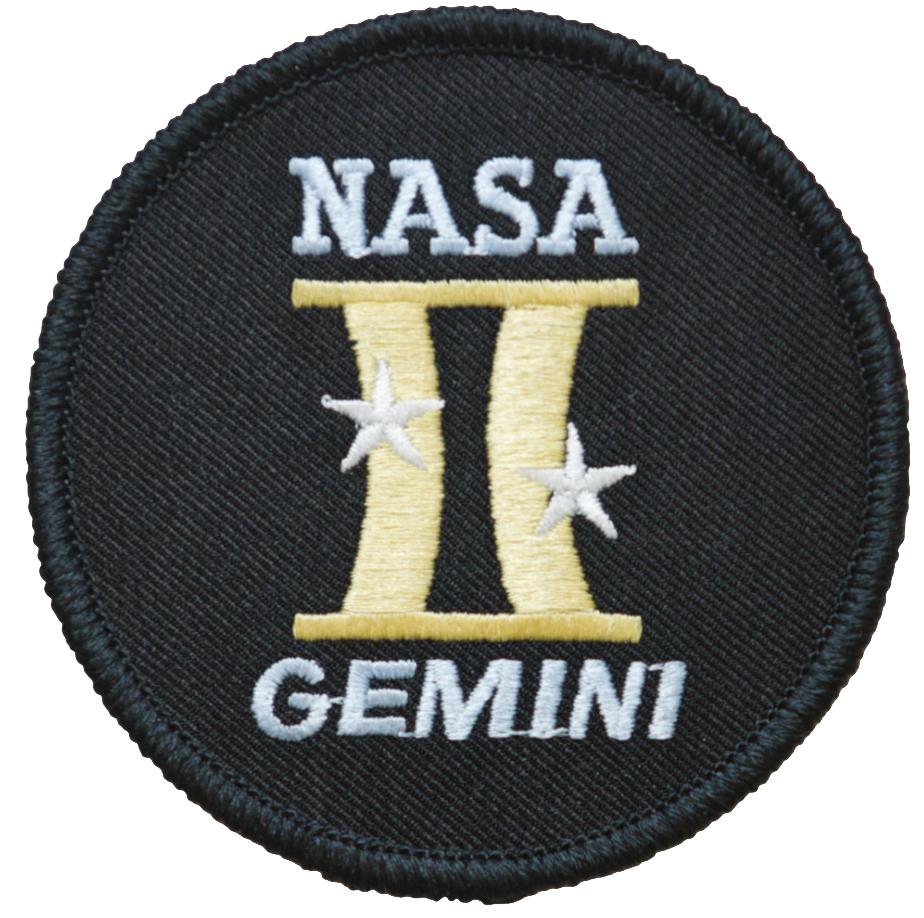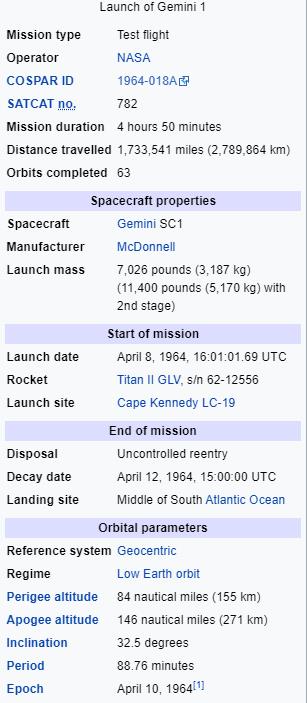Gemini Space Missions
Gemini 1
Astronauts:
Gemini 1 was the first unmanned test flight of the Gemini spacecraft in NASA's Gemini Programme. Its main objectives were to test the structural integrity of the new spacecraft and modified Titan II ICBM. It was also the first test of the new tracking and communication systems for the Gemini program and provided training for the ground support crews for the first manned missions.
The 1964 mission lasted only three orbits (64 orbits were completed before re-entry, but the official mission was complete after the third orbit). The spacecraft stayed attached to the second stage of the rocket and there were no plans for recovery.
Gemini Manned Missions
Study
Research
Main Index
Space Cosmology
Science Research
*
About
Science Research
Science Theories
Desk
Site Map
BookShelf
Copyright © by Nigel G Wilcox · All Rights reserved · E-Mail: ngwilcox100@gmail.com
Designed by Nigel G Wilcox
Powered By AM3L1A
Pages within this section: Gemini Manned Space Flights
Gemini 1 (um)
Pages within this section:
1
M
8
SM
Sub-Menu
menu
Unmanned
After a flawless countdown, Gemini 1's Titan II booster lifted off from Cape Kennedy's (now Canaveral) Launch Complex 19: 194 at 11:00:01 EDT, April 8, 1964.197 The first stage was jettisoned after two and a half minutes with the rocket 35 nautical miles (64 km) high and 49 nautical miles (91 km) downrange. At that moment, there was an unexpected three-second loss of signal from the craft. It was later determined that this brief communications blackout was caused by charged ions from the separation and startup of the second stage, similar to the blackout during spacecraft reentry. All subsequent Gemini flights would have the same brief blackout.
The spacecraft achieved orbit five and a half minutes after launch. The launch vehicle had imparted an excess 7 meters (24 feet) per second of velocity to the Gemini 1, placing the spacecraft into an orbit with an apogee of 170 nautical miles (320 km) instead of the planned 161 nautical miles (299 km). This lengthened Gemini 1's lifespan from the planned three and a half days to four.
The formal mission of Gemini 1 was over long before that. Its battery had only been designed to last a single orbit, and only the first three orbits — lasting four hours and 50 minutes — were part of the flight plan. Gemini 1 and its attached second stage were tracked by the Manned Space Flight Network until they reentered over the South Atlantic, midway between South America and Africa, on April 12, 1964 during their 64th orbit.
As a result of the successful flight, the Titan II was considered "man-rated" (safe for use in human spaceflight). 200 Man-rating the Gemini capsule itself would not be accomplished until the launch of Gemini 2 nine months later, on January 19, 1965.
2
3
4
5
6
7
8
9













